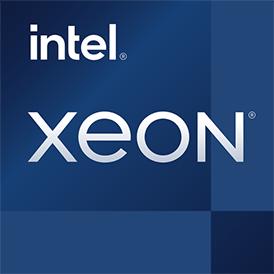 Geekbench 3, 64bit (Multi-Core)
Geekbench 3, 64bit (Multi-Core)
|
|
Intel Xeon E5-2660 v3
10C 20T @ 2.6 GHz
|
33900
|
|
|
Intel Core i7-6650U
2C 4T @ 2.2 GHz
|
6422
|
 Estimated results for PassMark CPU Mark
Estimated results for PassMark CPU Mark
|
|
Intel Xeon E5-2660 v3
10C 20T @ 2.6 GHz
|
13147
|
|
|
Intel Core i7-6650U
2C 4T @ 2.2 GHz
|
3650
|
 Geekbench 5, 64bit (Multi-Core)
Geekbench 5, 64bit (Multi-Core)
|
|
Intel Xeon E5-2660 v3
10C 20T @ 2.6 GHz
|
7022
|
|
|
Intel Core i7-6650U
2C 4T @ 2.2 GHz
|
1846
|
 Geekbench 6 (Multi-Core)
Geekbench 6 (Multi-Core)
|
|
Intel Xeon E5-2660 v3
10C 20T @ 2.6 GHz
|
6285
|
|
|
Intel Core i7-6650U
2C 4T @ 2.2 GHz
|
2146
|
 Geekbench 3, 64bit (Single-Core)
Geekbench 3, 64bit (Single-Core)
|
|
Intel Core i7-6650U
2C 4T @ 2.2 GHz
|
3589
|
|
|
Intel Xeon E5-2660 v3
10C 20T @ 2.6 GHz
|
3429
|
 Cinebench R15 (Multi-Core)
Cinebench R15 (Multi-Core)
|
|
Intel Xeon E5-2660 v3
10C 20T @ 2.6 GHz
|
1593
|
|
|
Intel Core i7-6650U
2C 4T @ 2.2 GHz
|
300
|
 Geekbench 6 (Single-Core)
Geekbench 6 (Single-Core)
|
|
Intel Core i7-6650U
2C 4T @ 2.2 GHz
|
1092
|
|
|
Intel Xeon E5-2660 v3
10C 20T @ 2.6 GHz
|
1042
|
 Geekbench 5, 64bit (Single-Core)
Geekbench 5, 64bit (Single-Core)
|
|
Intel Xeon E5-2660 v3
10C 20T @ 2.6 GHz
|
884
|
|
|
Intel Core i7-6650U
2C 4T @ 2.2 GHz
|
820
|
 iGPU - FP32 Performance (Single-precision GFLOPS)
iGPU - FP32 Performance (Single-precision GFLOPS)
|
|
Intel Core i7-6650U
2C 4T @ 2.2 GHz
|
806
|
 Cinebench R15 (Single-Core)
Cinebench R15 (Single-Core)
|
|
Intel Core i7-6650U
2C 4T @ 2.2 GHz
|
144
|
|
|
Intel Xeon E5-2660 v3
10C 20T @ 2.6 GHz
|
127
|
 Cinebench R11.5, 64bit (Multi-Core)
Cinebench R11.5, 64bit (Multi-Core)
|
|
Intel Xeon E5-2660 v3
10C 20T @ 2.6 GHz
|
16.3
|
|
|
Intel Core i7-6650U
2C 4T @ 2.2 GHz
|
3.3
|

